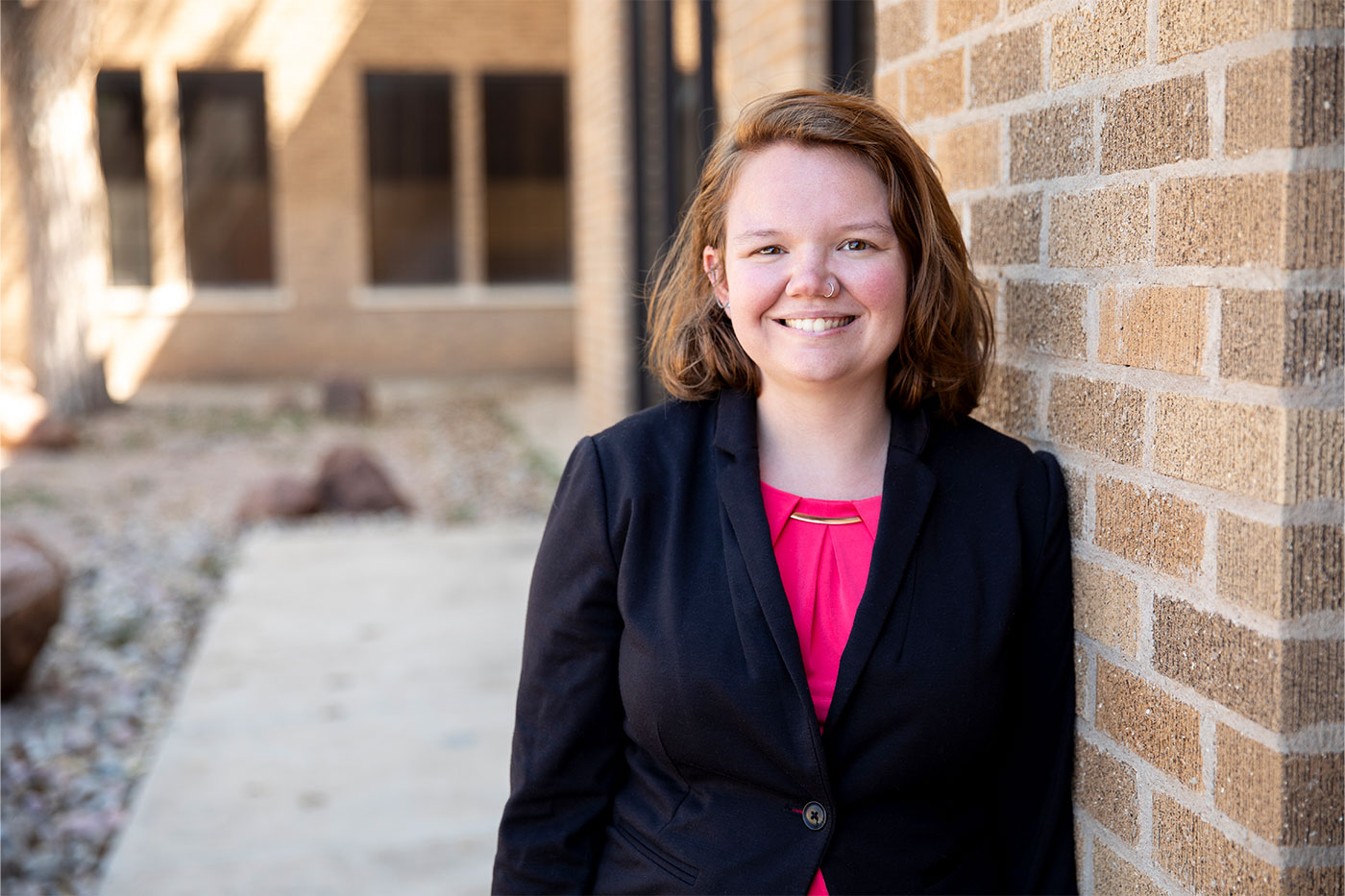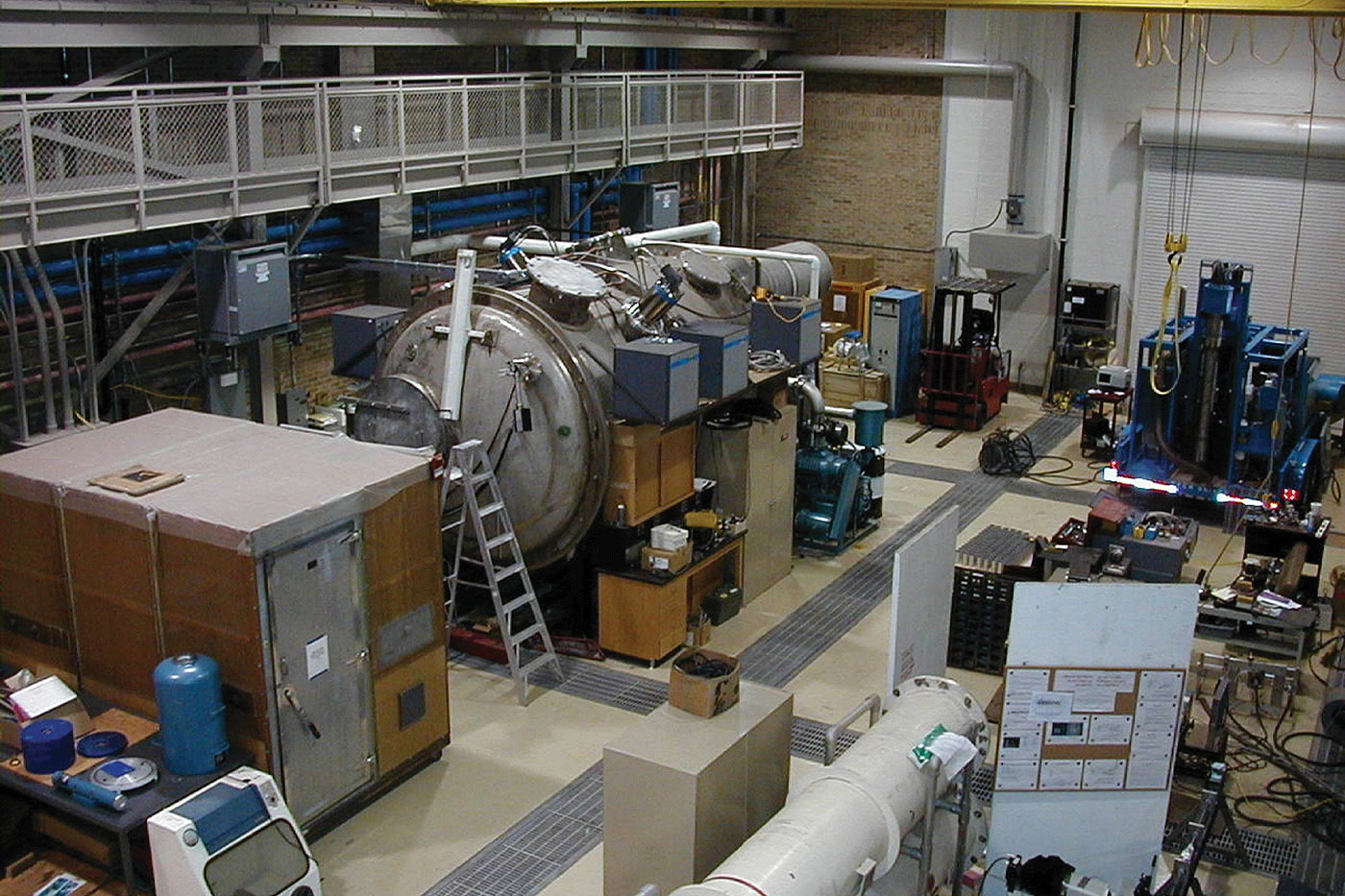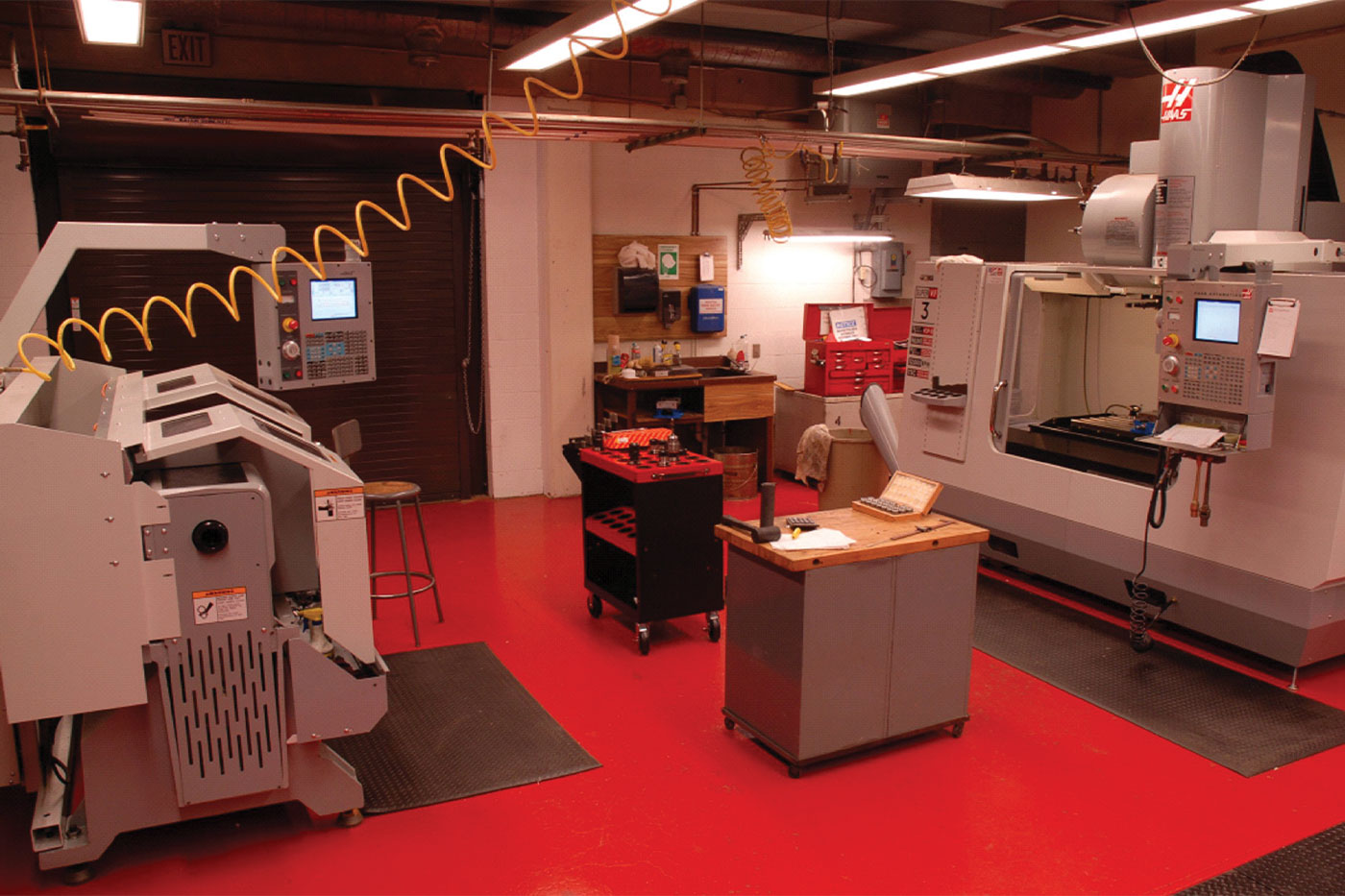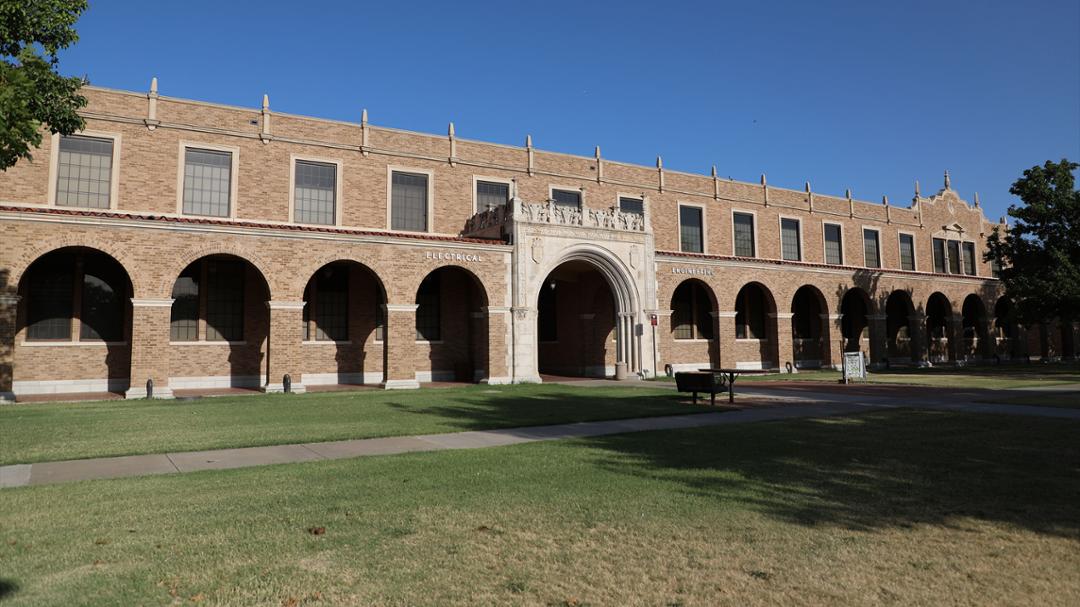At the Center for Pulsed Power and Power Electronics Laboratory, Micah LaPointe researches the possibility of building deployable solid-state microwave systems.
While other kids may have grown up dreaming about hitting a game-winning shot or singing to millions of adoring fans, Micah LaPointe dreamed of being a scientist.
“Ever since I was little, I knew I wanted to get a Ph.D.,” said LaPointe, an electrical engineering doctoral student in Texas Tech University’s Graduate School. “My parents said I would dress up in white coats and walk around my ‘lab’ – my bedroom.”
LaPointe will realize that long-held dream during the commencement ceremony this December. Her research focuses on building a deployable, solid-state microwave system that could be used in combat fields for drone deterrence.

LaPointe says she was fortunate to have won a fellowship at the start of her doctoral work because it gave her the flexibility to choose her research topic. She wasn’t beholden to what a funding sponsor would want her to research; she could be more exploratory and select a topic that mattered to her.
While drones have been used for military operations for several years, LaPointe was drawn to the larger scale usage of drones in the ongoing Russia-Ukraine war. Specifically, she remembers the drone jammers Ukrainian soldiers were using to disable Russian drones.
“They kind of look like small bazookas,” LaPointe said. “You literally put these devices on your shoulder and fire high-power blasts of microwave energy at drones to jam them.”
LaPointe thought there must be a better defense method and began researching novel technologies that could help deter drones in a more efficient manner.
Smaller, Better, More Efficient
LaPointe notes that ballistic weapons were first used to combat drone strikes, but they were often just as destructive as the drones and not fast enough for the Mach speeds of drones.
Today, microwave technology can be used as an alternative to ballistic weapons, but that form of technology also has its own set of challenges.
“They’re heavy vacuum-based systems that aren’t field deployable,” LaPointe said. “I wanted to go for something lightweight and compact so soldiers could carry it in a backpack.”
LaPointe also wanted to ensure those options were more efficient than what was used. She recognized her research would not be centered on creating an actual system that could take down a drone but would instead focus on showing the potential of smaller, more efficient systems.
LaPointe began looking into Class E power amplifiers commonly used in radar applications. Though not overly popular, Class E amplifiers are highly efficient in their energy usage. They use a solid-state switch system and do not require as much power as vacuum-based systems.
“More power means more weight means more cost,” LaPointe said.
LaPointe spent the next 18 months designing her own Class E amplifier. There were a lot of late nights, complex simulations and failed prototypes – this was not a project for those seeking immediate results.
“The first ‘aha moment’ came when I got a Class E power amplifier working at 83% efficiency at 30 watts of power,” LaPointe said. “It was actually out-performing commercial amplifiers.”
For reference, many computer monitors use around 30 watts of power.
And though this was a huge milestone for LaPointe’s research, she stays centered and humble when discussing it, understanding the small role her research may play in a larger scene.
“I was never going to solve the world’s problems,” LaPointe said. “I didn’t even build a system that could theoretically take down a drone. But I did look at the viability of this technology, and so I hope that other defensive contractors for the military will be able to look at my work and use it as a launchpad.”
The Center for Pulsed Power
LaPointe’s research is with the Center for Pulsed Power and Power Electronics Laboratory (P3E) housed in the Edward E. Whitacre Jr. College of Engineering.


Pulsed power research involves storing, shaping, transmitting and measuring high energy and delivering it to a load or applicator. The energy is then transferred in short pulses for a variety of applications, such as drone deterrent technology.
Or as LaPointe explains it, pulsed power is essentially taking a lot of energy and squeezing it into a small amount of time. The faster the process you want or need, the more challenging everything becomes.
“Research in pulsed power or any field requires talented, innovative faculty and graduate students,” said Mark Sheridan, dean of the Graduate School. “We’re really proud to have attracted Micha into our graduate program. Her problem-solving approach is key to making advances in pulsed power research.”
LaPointe began doing research in P3E as a second-year undergraduate student. She was drawn to the lab because of the amount of defense research being conducted.
“I knew I wanted to get into defense contracting as an engineer when I first started college,” LaPointe said. “I had no idea I would absolutely get sucked in and completely fall in love with pulsed power research.”
Prior to her doctoral research, LaPointe researched lightning propagation and inductive gate driving as an undergraduate student and surface charge distribution of plastics as a master’s student.
LaPointe is grateful to have spent nearly a decade working in P3E.
“As far as universities go, we have the premier facilities in the world,” said LaPointe. “You can find Texas Tech Pulsed Power Laboratory graduates at any of the national laboratories or private companies – anywhere that does defense contracting, we have graduate students.”
P3E is a point of pride for not only Whitacre College, but Texas Tech at large.
“Research in all aspects of energy is a major focus of Tech Tech,” said Sheridan. “Micah’s research is an example of the importance and impact of that work.”
Above all, LaPointe values the personal connections she’s made with everyone in the lab.
“We’re all just doing what we love,” LaPointe humbly bragged. “We’re in this together, and it’s just crazy what this community has to offer the world. I’m glad I get to be a small part of it.”
The Pulsed Power Professional
Weeks before graduation, LaPointe began working as a pulsed power engineer at Xcimer Energy, a nuclear fusion startup located in Denver. There, she will use lasers to ignite or cause ignition for a fusion reaction. LaPointe is excited about this shift in work, especially because a lot of power needs to be delivered to the lasers and because Xcimer works at a large, commercial level.
However, LaPointe’s excitement comes with a slight hint of reservation.
Research into nuclear fusion may have begun in the 1940s, but it was only in late 2022 when scientists at Lawrence Livermore National Laboratory were able to achieve a net energy gain in a fusion experiment. For all intents and purposes, nuclear fusion is still in its infancy.
“We’re going to have failures,” LaPointe said. “We’re going to have deadlines that won’t be met. That’s part of the work. We need to convince investors that it’s still worth it.”
LaPointe is confident she and her team can meet this challenge thanks to her time spent at P3E. She sees this as a real opportunity to make the impact she dreamed of having in her bedroom, pretending to be a scientist as a kid.
“My time here has taught me how to be patient and to continue pursuing things when it gets hard,” LaPointe reflected. “You can’t get hung up on failures.
“My motto is, ‘It doesn’t work until it does work.’ That can seem really disheartening at times, but I will say you feel a ton of satisfaction when it actually does work.”
As a soon-to-be alumna of P3E, LaPointe is acutely aware of this full-circle moment she’s experiencing.
She started as a second-year engineering student, unfamiliar with the concept of pulsed power research. As she spent time at P3E, she fell in love with the field and was in awe of the researchers in the lab or those who have graduated to conduct meaningful research beyond academia.
“When you take the name ‘Texas Tech’ with you as a pulsed power engineer, it carries weight,” LaPointe said. “It’s definitely a heavy weight, and that also means there’s a lot of responsibility there. I need to be the best pulsed power engineer I can be. I need to continue learning and growing. I also need to be willing to shepherd the next generation of power engineers.”

